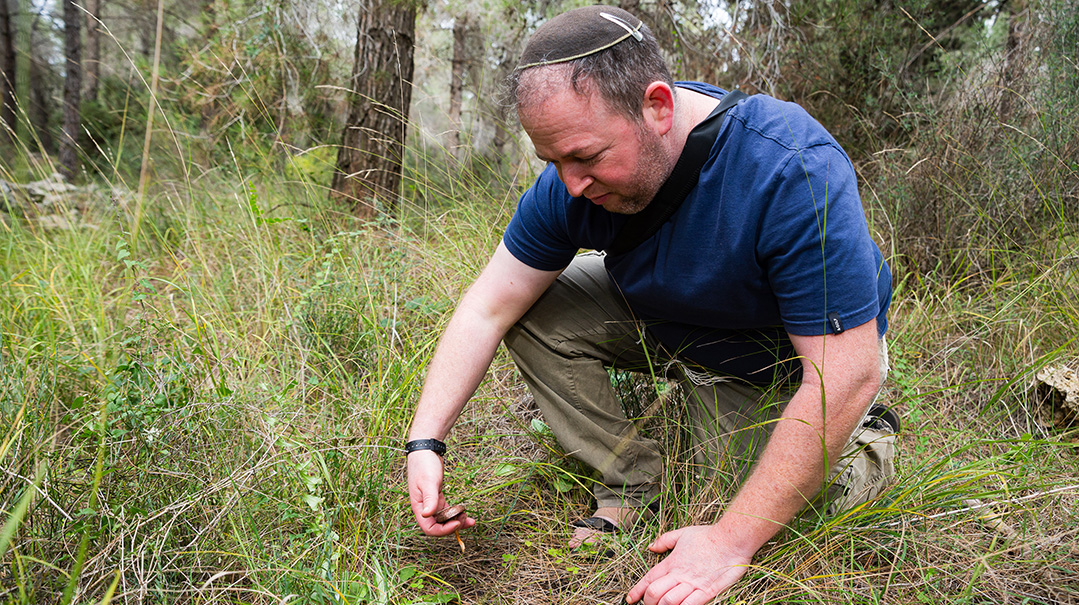Out to Lunch
| February 14, 2023They’re a community of mushroom hunters, who know how to find some of nature’s richest food in venues you’d never expect

Photos: Elchanan Kotler
They live in the city and work in a variety of professions, but after the rains, you can find them under a canopy of trees, digging under the brush — foraging for a meal in the woods. They’re a community of mushroom hunters, who know how to find some of nature’s richest food in venues you’d never expect, giving new meaning to going out to eat
IT might not have been the Amazon Rain Forest or Redwood National Park, but Park Begin, south of Jerusalem on the outskirts of Beitar, was just fine for our purposes. We decided to join up with Tal Shaul, a computer programmer from the Bnei Brak suburb of Givat Shmuel, who never misses an opportunity to head for the woods after a good week of rain. By day’s end, Tal will have filled a box with an assortment of mushrooms for dinner, although he’s no desperate pauper who can’t afford groceries. But he is a nature lover, and nothing makes him happier than pulling up logs and peeking through underbrush in search of this wonder-food that actually grows in abundance all over Eretz Yisrael.
Mushrooms are one of nature’s most intriguing and mysterious foods. They look like they grow in the ground, but the “plant” you see is actually just the tip of a massive network of underground fungi, nurtured by a combination of air and decomposed matter. That’s why the brachah is shehakol, and there is no obligation (in Eretz Yisrael) of terumos and maasros.
While Israel might be classified as a desert nation, it’s blessed with many forests and wooded areas pulsing with life.
“People think of foragers as hippies living in tents and eating weeds,” says Tal, 36, who has been part of the mushroom foraging community for the last seven years, “but that’s very far from the truth. Israel is a small country without too many natural spaces that aren’t being built up, and although most people live in crowded cities, Israelis love the outdoors — they’ll make a picnic on any patch of grass they find — so this is a really good opportunity to get back to nature, and it doesn’t have to be a huge place. It can even be a park.
“Lots of people ask me about my strange hobby,” Tal continues, qualifying that he also tracks plants, birds, and even snakes. “But after you find, harvest, and taste the mushrooms picked straight from the ground, you might never go back to eating canned mushrooms again.”

Meet the Blessings
As we follow Tal into Park Begin, we realize he isn’t so eccentric after all. There’s a whole community of people who choose to “go out to eat” — not in a restaurant, but in the heart of nature. And the best thing is that the gourmet delicacies here are free. These mushroom foragers are known as mycophiles, although most people just call them “mushroom hunters.”
In Israel, most of them belong to the Israel Mushroom Collectors group, where Tal is one of the few religious members and considered the “mashgiach” because of his practical knowledge regarding the very real kashrus issue of infestation. Many of his colleagues are immigrants from the former Soviet Union.
“We often went to the forest to pick mushrooms,” one middle-aged Russian-born woman explains. “When we came to Israel, we found that the Israelis are not so familiar with the natural abundance in the woods, which is so readily available for the taking. But with time, more and more Israelis are being introduced to this blessing.”
Oops! We could not locate your form.







